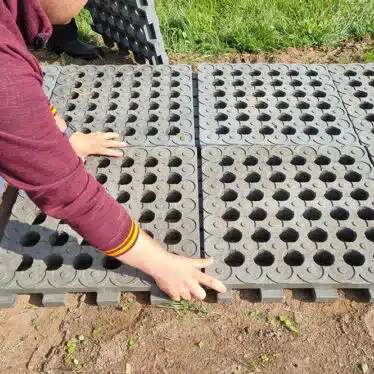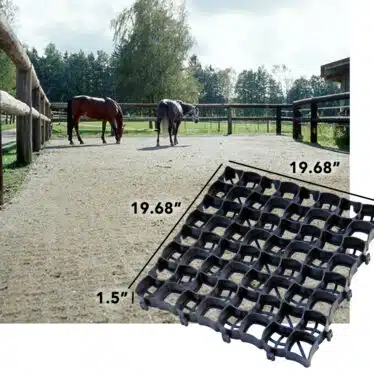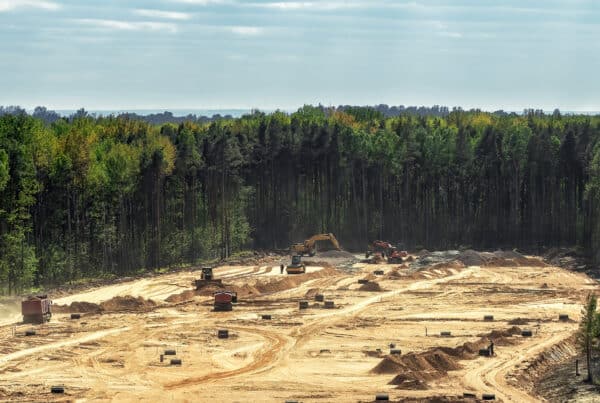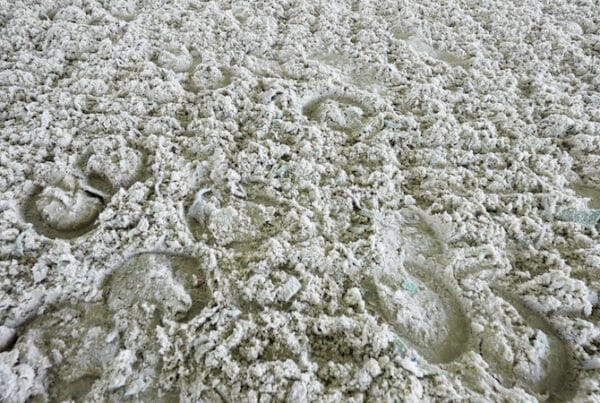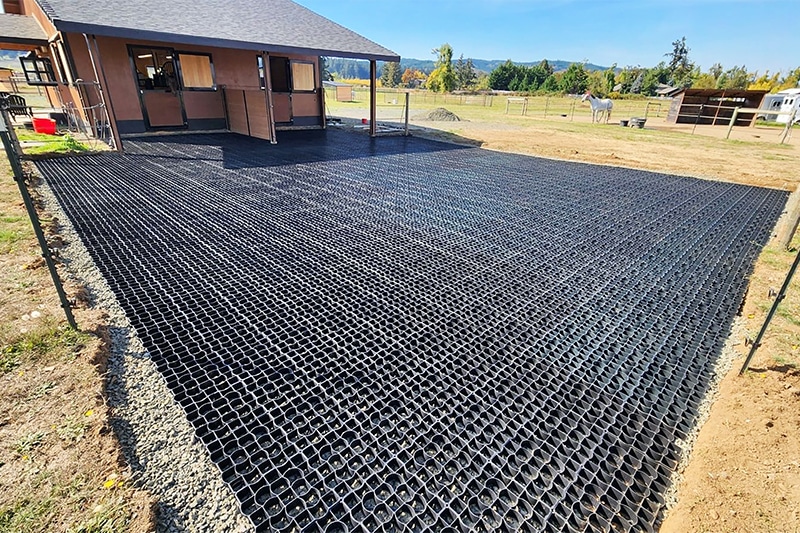
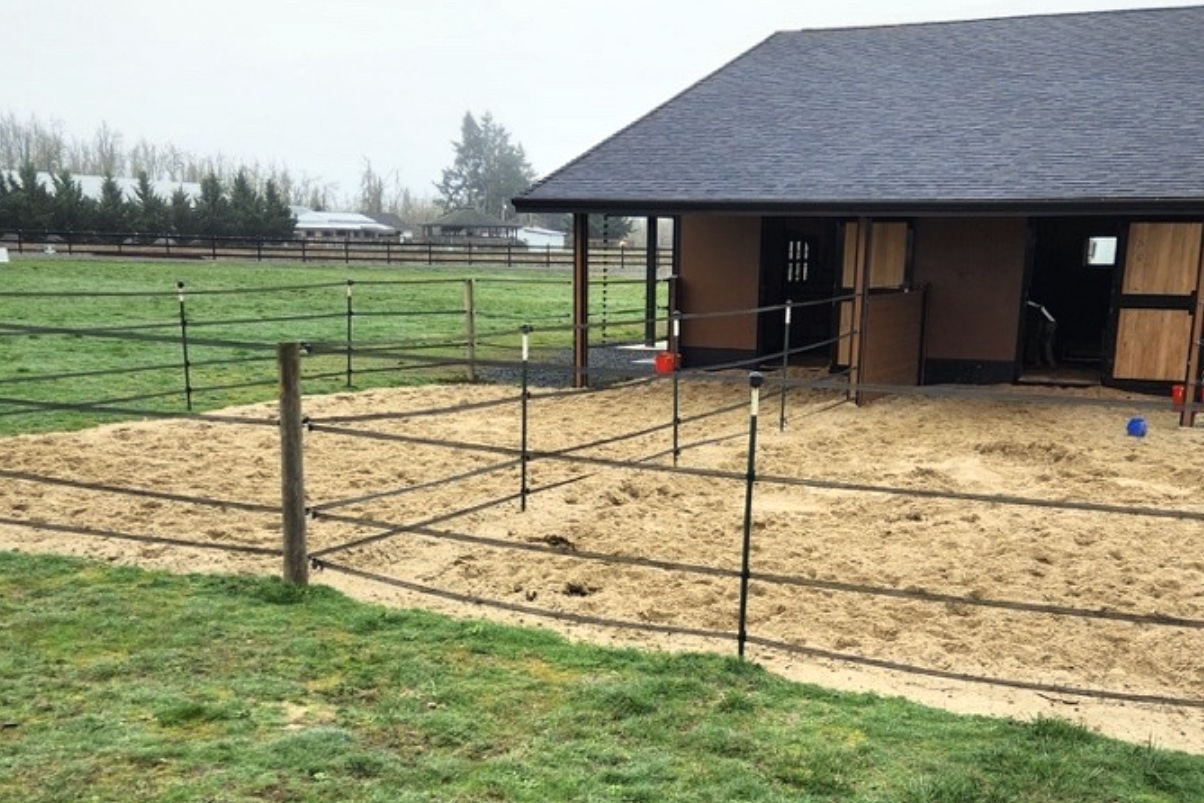
Geo Grid installation in a horse paddock
What is Geo Grid?
Geo Grid, or geosynthetic grid, is a geosynthetic material used to reinforce and stabilize soils, prevent erosion, and/or provide a drainage layer. It consists of a grid structure made from polymers like polyester, polyethylene, or polypropylene, which provides tensile strength and stability to various construction projects. Geo Grid from Premier Equestrian is a ridged piece of HDPE, with open cells, thick ribbing, and 1.5” depth.
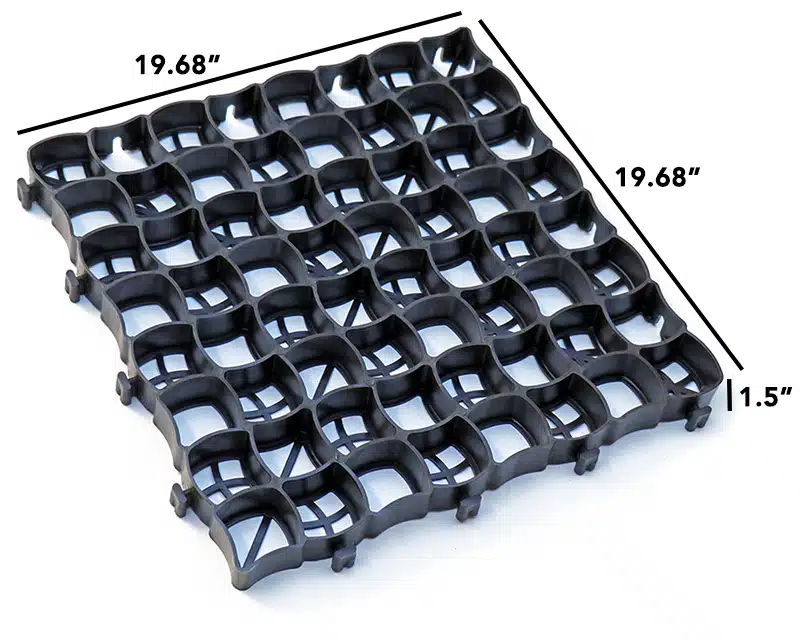
The Need for Geo Grid
In various sectors, maintaining stable and durable ground surfaces is crucial for safety, functionality, and cost-effectiveness. In equestrian areas, Geo Grid helps with muddy paddocks, unstable arenas, and eroded pathways, enhancing horse health and facility longevity. For non-equestrian applications, Geo Grid is vital in construction sites, parking lots, driveways, and landscaping projects, where it addresses soil stabilization, erosion control, and drainage. Whether for a paddock, a public park, a residential driveway, or a commercial parking area, Geo Grid ensures that the ground remains firm, reducing safety risks and maintenance costs.
Quality from Premier Equestrian
When you choose Geo Grid from Premier Equestrian, you’re opting for high-quality, eco-conscious solutions. Our Geo Grid is manufactured from 97% post-consumer recycled, reinforced high-density Polyethylene, offering durability for both equestrian and non-equestrian uses. It’s non-toxic, safe for animals and humans alike, and promotes excellent drainage. With specifications handling up to 3500 tons per square inch when installed correctly, it’s suitable for light to heavy-duty applications, from residential gardens to industrial access roads.
Service from Premier Equestrian
At Premier Equestrian, we cater to a diverse clientele with tailored Geo Grid solutions. Our product not only stabilizes ground but also improves the overall site management by reducing maintenance and enhancing aesthetics for both equestrian and general landscaping projects. Our consultations cover all types of applications, ensuring you get a solution that fits your specific needs, whether for a farm, a municipal park, or private property. With bulk purchasing options and easy installation, we make the switch to stable, functional surfaces straightforward and cost-effective.
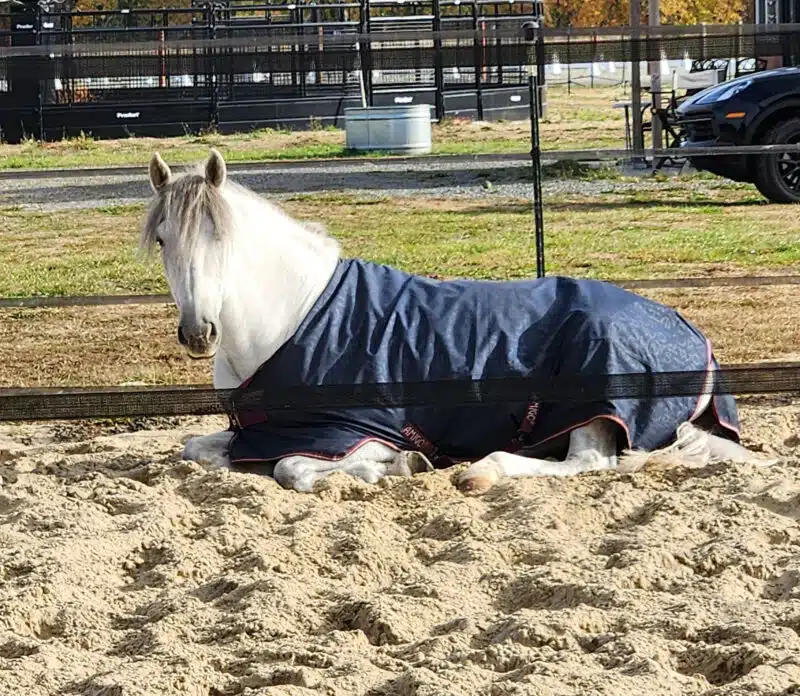
Why Use Geo Grid?
Geo Grid is utilized for several reasons:
- Soil Stabilization: Distributes loads over a wider area, ideal for construction on weak soils.
- Erosion Control: Reinforces soil in slopes, embankments, and retaining walls.
- Increased Load Bearing Capacity: Allows construction over softer grounds for roads, driveways, or foundations.
- Drainage: Creates effective drainage layers, preventing mud and puddles in various settings.
- Cost-Effective: Reduces the need for extensive groundwork or expensive materials.
- Durability: Resists biological degradation, ensuring long-term stability for all ground applications.
How is Geo Grid Used?
Here’s a detailed guide on how to install Geo Grid, suitable for both equestrian and non-equestrian contexts:
Step 1: Site Preparation
- Clear the area of debris, vegetation, and level the ground.
Step 2: Native Soil Base
- Compact the native soil to create a stable base.
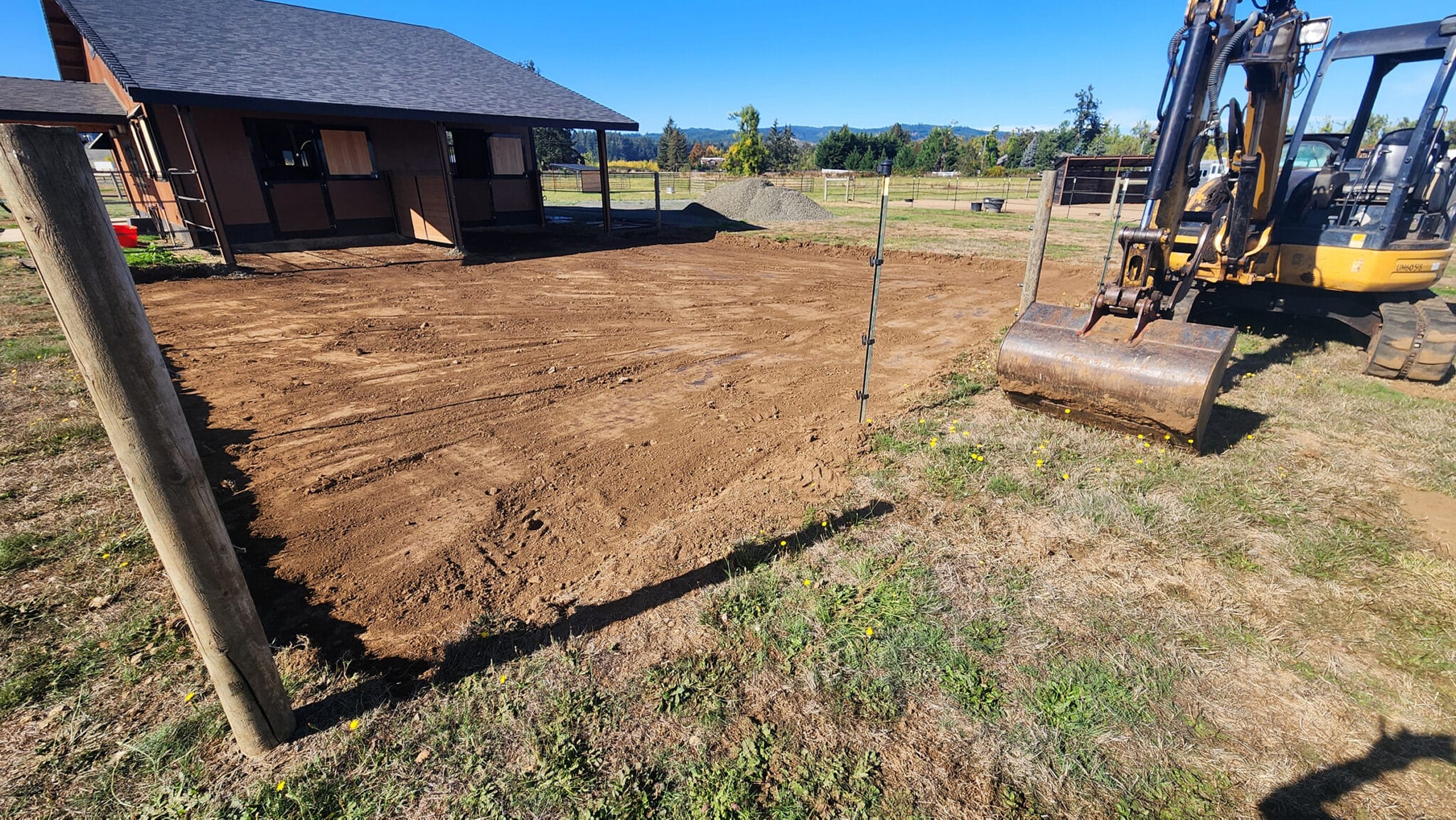
Step 3: Drainage Layer Installation
- Spread a 3-6″ layer of crushed stone or gravel for drainage.
Step 4: Optional Geotextile Layer
- Use non-woven geotextile fabric if necessary to prevent fine particle migration into the drainage layer.
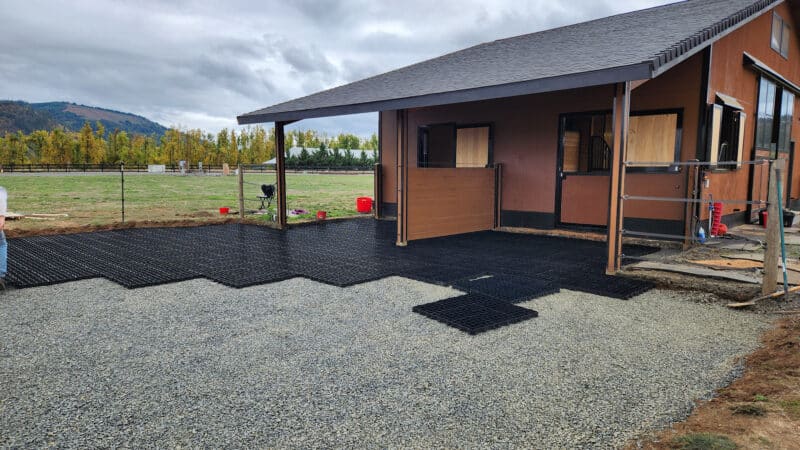
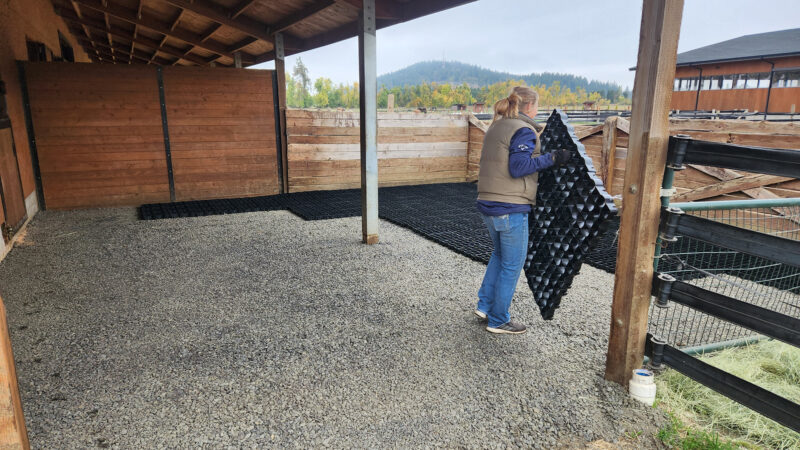
Step 5: Geo Grid Installation
- Lay Geo Grid over the prepared layers, filling with gravel or sand to interlock and stabilize.
Step 6: Applying the Surface Material
- Choose from grass, gravel, sand, or stone dust, applying according to the desired use:
- Grass: For parks or recreational areas.
- Gravel/Sand/Stone Dust: For driveways, pathways, or arena surfaces.
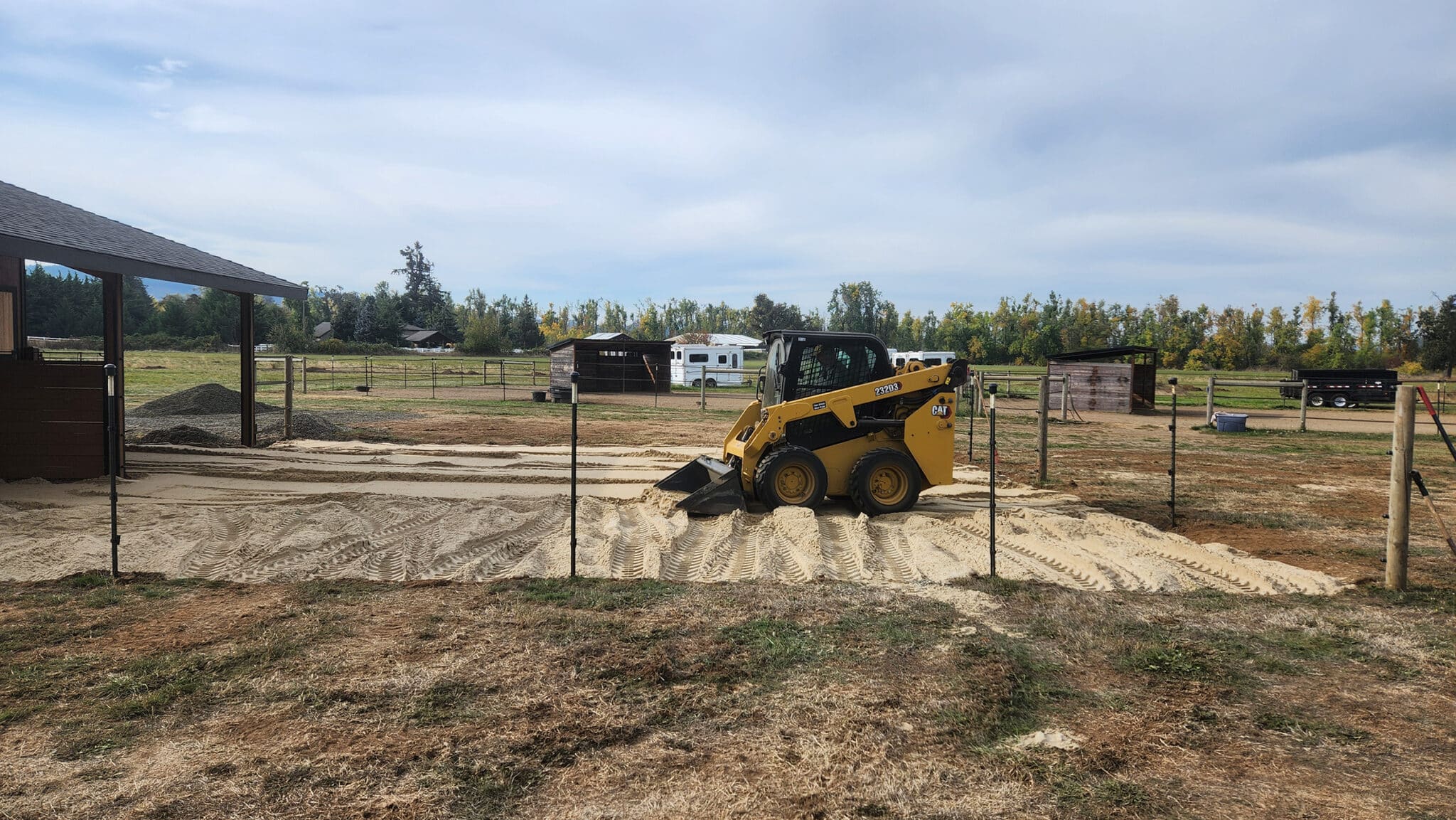
Additional Tips for Success
- Compaction: Ensure each layer is well-compacted for stability.
- Maintenance: Regular checks post-installation to maintain integrity.
By applying Geo Grid in these ways, you can enhance the stability and longevity of various projects, from horse arenas to city landscapes. If you need further assistance or have questions, feel free to reach out or comment below!

